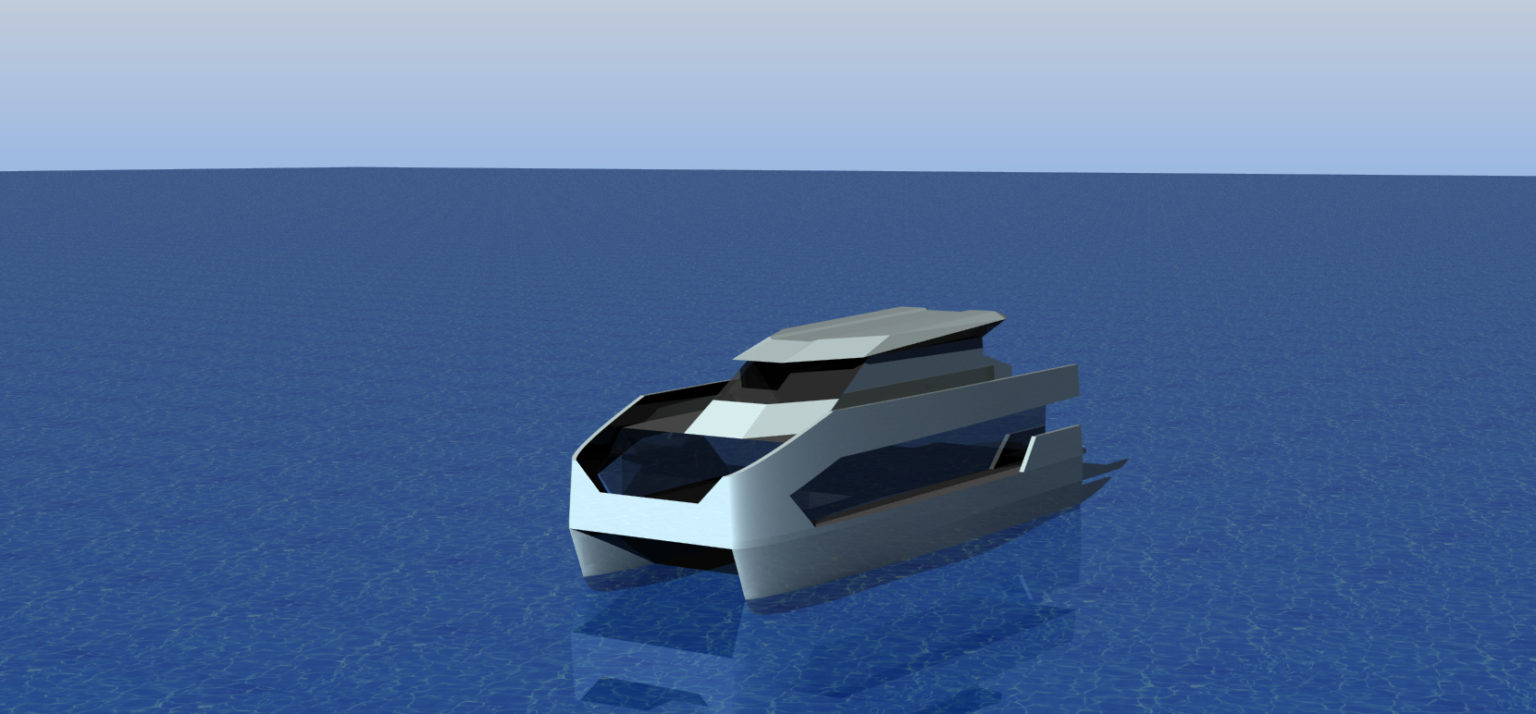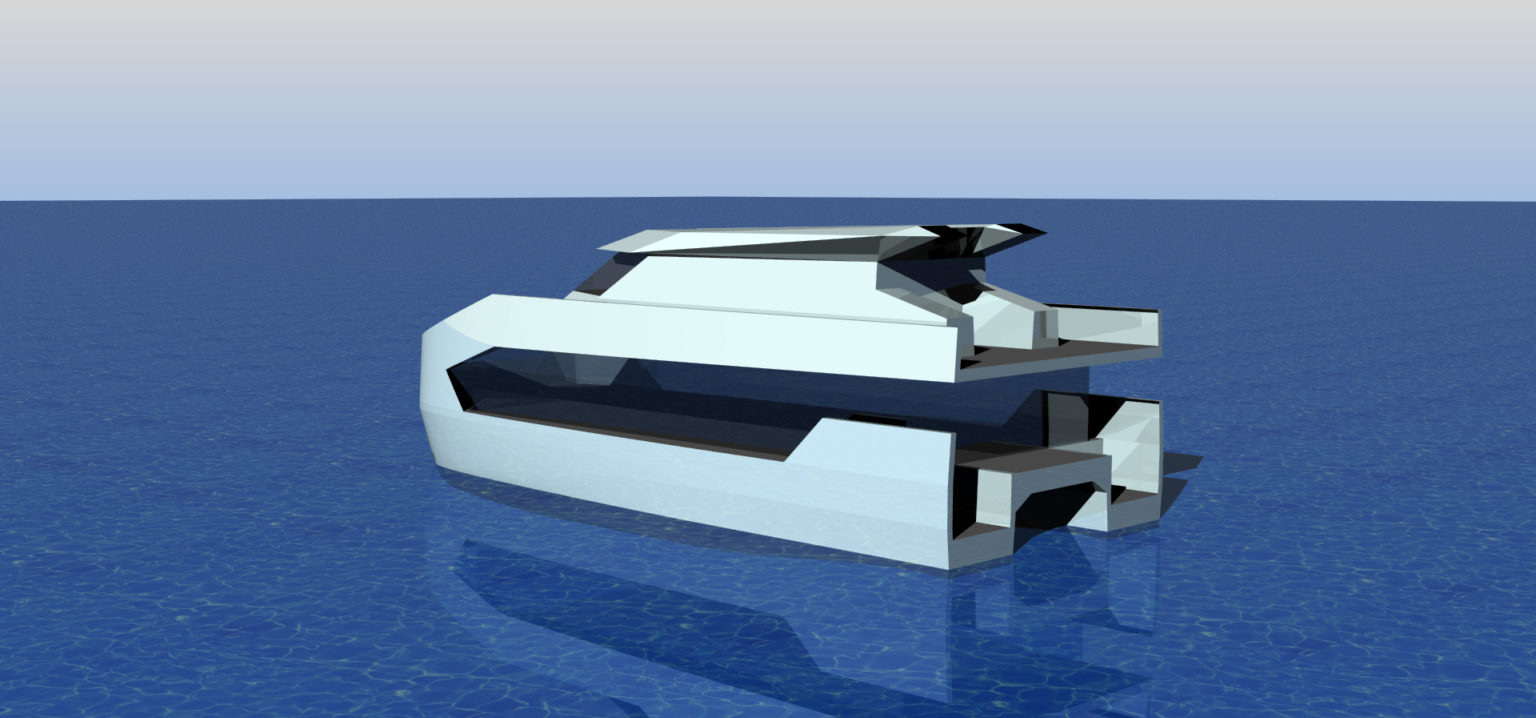The world fleet needs to decarbonize. Global marine transport emits 940 million tonnes of CO2 annually. The Paris Agreement has mandated the world to reduce GHG emissions, and the International Maritime Organization (IMO) GHG Strategy requires shipping to reduce emissions by 50% by 2050. Decarbonization will require some of the fleet to be zero emission vehicles (ZEV). However, ZEVs are not competitive in the current market of inexpensive fossil fuels. This is causing governments to recognize that polluting isn’t free, resulting in stricter emissions regulations and carbon taxes to level the playing field. Here in Canada carbon taxes will grow to $170 per tonne by 2030. In order to meet the target of the IMO, Lloyd’s Register predicts that 9% of the global marine fuel demand will be hydrogen by 2030 (Lloyd’s Register, Global Marine Fuel Trends 2030). Ballard Power Systems is currently predicting a marine hydrogen fuel cell (H2FC) market of $307 million by 2030 for which they have developed a marine specific fuel cell. However, the current cost of deploying a hydrogen fuel cell vessel in Canada is great. Due to the cost barrier and the technical and regulatory uncertainty surrounding hydrogen fuel cells, there are no hydrogen fuel cell vessels in Canada. In order to transition Canada’s marine fleet to zero emission, a pilot project is required to develop the regulations and safety cases with Transport Canada to demonstrate how to get a H2FC vessel approved and to give certainty in operating a vessel powered by hydrogen.

Capilano Maritime Design Ltd. (CMDL) has been on the forefront of using hydrogen as a marine fuel since 2009 with our Hybrid Tug design, but not until recently has the technology been suitable in a more commercial setting. This shift in technology has caused CMDL to develop the H2Ocean. The H2Ocean is a catamaran harbour cruise vessel that is to be completely powered by hydrogen fuel cells. A harbour cruise vessel was chosen for this pilot project for two primary reasons: a relatively low power requirement and a high public profile. As the cost of hydrogen fuel cells is currently high, selecting a vessel that does not have demanding speed or manoeuvring requirements improves the economics of the pilot project. Hydrogen fuel allows for a greater range at less weight, and refuelling time is much reduced over a 100% battery system. Lastly, as this is a pilot project, its purpose is to show the world at large that hydrogen can be used in a marine setting.
In order to bring this pilot project to reality, CMDL has assembled a formidable team of companies to address the challenge. The team consists of globally leading hydrogen companies, regulators, academics, industry groups and, of course, naval architects and marine engineers. The team and their roles in the project are:
- CMDL’s role in the project is to be the lead in the design of the H2Ocean. CMDL will be the Naval Architect in the design of the vessel’s hull, structure, passenger area arrangement, and mechanical systems and will coordinate all related activities of the Project Partners.
- HTEC is a leading developer and provider of hydrogen solutions that works across the entire hydrogen value chain from production and processing through to distribution and vehicle fueling. HTEC’s role will be the design of the compressed hydrogen storage onboard the vessel and the bunkering system to fuel the vessel. HTEC will also carry out further analysis for the infrastructure required on shore to fuel the vessel.
- Ballard Power Systems Inc. is an international company first incorporated in 1989 in BC to develop environmentally-clean fuel cells for zero-emission vehicles. The first fuel cell bus was presented by Ballard in Vancouver in 1993 and has since delivered fuel cell busses all around the world. The 8th generation high performance fuel cell module, FCmove, for heavy-duty land-based motive applications was launched in 2019 and the FCwave for marine applications was launched in 2020. The engineering and manufacturing facilities in Burnaby produce membrane electrode assemblies, integrate and test fuel cell stacks, assemble and test motive modules and provide engineering support to customers.
Ballard’s role in the project is to provide technical support to the design team with regards to integrating the FCwave fuel cells into the vessel. - Canal Marine & Industrial Inc. is a marine electrical engineering and production firm. Canal has offices in North Vancouver, BC and St. Catherines, ON and has been providing electrical engineering installations for marine vessels with a 24/7 service arm for troubleshooting, maintenance and repair services since 1973. Canal has designed and installed many hybrid marine propulsion systems and their controls including the airport ferry to Billy Bishop Airport in Toronto. Canal’s role in the project is to be the electrical engineer for the design of the power generation and distribution systems onboard the vessel.
Canal will provide the electrical integration and control of the fuel cells, batteries and electric motors of the propulsion system. - Lloyd’s Register (LR) is an international marine classification society that publishes design rules for marine vessels. LR provides professional services for engineering and technology to improve safety and performance. LR is headquartered in London, UK and has an office in North Vancouver, BC.
LR’s role in the project is to lead the Hazard Identification process of the hydrogen systems and ultimately review and approve the design package completed by the project team to ensure it complies with their safety protocols. LR, as a Transport Canada Recognized Organization, will provide a key interface with Transport Canada in the implementation of a new fuel and power generation system on board a Canadian vessel. - The Canadian Hydrogen and Fuel Cell Association (CHFCA) is a collaborative effort of industry, academia, government agencies, financial organizations and other stakeholders focused on advancing the use of advanced hydrogen and fuel cell technologies and products. CHFCA provides industry expertise and are considered global leaders in hydrogen and fuel cells as a result of the strong partnerships between members.
CHFCA’s role in the project is to represent its industry members, monitor regulatory discussions, and to raise awareness of the project throughout Canada. - University of British Columbia (UBC) is an academic institution and has a Naval Architecture and Marine Engineering (NAME) program.
Their role in the project is to provide technical support on naval architecture subjects resulting from their research programs. They will also provide a source of students to be employed by CMDL to work on the project. UBC is also investigating the possibility of setting up a research program for the evaluation of Underwater Radiated Noise on a fuel cell-propelled vessel in comparison to a reciprocating, internal combustion engine-driven vessel. - Fairweather Cruises is the leading booking agent and event planner for charter cruise vessels in Vancouver. They have access to all the experience and expertise of cruise vessel owners and operators. Their role in the project is to consult on cruise vessel passenger area design and operation.
Why pursue hydrogen at all? Several battery electric vessels have been operating around the globe for the past few years including the Niagara Falls tourism ferries and the famous Ampere Ferry in Norway. These vessels have very short and fixed routes, allowing them to return quickly to their battery charging stations. Most commercial ships, however, require a more energy dense fuel to give them longer range, and hydrogen is the densest by weight at almost three times that of diesel. Furthermore, in comparison to batteries, according to our research, a propulsion system for the H2Ocean harbour cruise vessel using only battery banks would weigh 27.3 tonnes whereas our fuel cell propulsion system would only weigh 14.5 tonnes for 600kW total installed power and a 150nm range. The hydrogen fuel cell system takes up less space and makes for a lighter vessel and it will take only one hour to re-fuel the hydrogen tanks compared to many hours to re-charge battery banks. Additionally, hydrogen storage can be expanded at low cost (as long as space is available) to significantly improve the range of a vessel whereas adding additional battery packs can be very expensive. We feel these advantages will favour hydrogen fuel cell technology in the marine market in the future.
Other countries around the world have already begun to develop their own hydrogen fuel cell pilot project vessels. Switch Marine’s Sea Change in San Francisco, part of the Water-Go-Round Project, is to begin operations this quarter (summer 2021). Norway’s MF Hydra is set to begin later this year as well. The Hyseas III in Scotland has begun the design this year. The Hydroville in Belgium has been operating since 2017, though it uses hydrogen combustion, not H2FC. The Energy Observer of France has been sailing since 2017. If Canada wants to remain competitive in the marine sector, the time is now to start investing in the development of marine hydrogen fuel cell technology and regulations. The marine industry is slow to adapt new technologies due to the large capital investments required for a single vessel. The H2Ocean, as a pilot project, will be used to develop the regulations with Lloyd’s Register and Transport Canada that can be used by the industry at large for future vessels, making it easier for adapting zero-emission fuels.

CMDL has been working on the H2Ocean’s concept design while we are awaiting an end user partner to join the project and have been seeking government funding. We were awarded money from the Province of British Columbia through the CleanBC Go Electric and Advanced Research and Commercialization Program (ARC) to carry out the design of the vessel and H2FC propulsion system. The hydrogen harbour cruise vessel will be designed to attract a specialty market of zero-emissions harbour cruises. It is believed that this concept will attract forward thinking clients to host their social functions in a sustainable way while having great views of the natural areas around Vancouver. CMDL hopes that the design will serve as a basis for future hydrogen fueled passenger vessels in the Pacific Northwest, and abroad.
Hydrogen is expected to be a major marine fuel source in the coming decade. Existing Canadian technology is poised to be a major player in the hydrogen-ZEV marine market. At this time, no hydrogen fuel cell vessels exist in Canada and few exist globally. Additionally, there are few published regulations for the use of hydrogen as a marine fuel. In order for Canada to follow through on the National Strategy for Hydrogen to realize it’s potential as a global hub for hydrogen a pilot project is needed as a proof of concept and for the regulatory bodies to develop the standards required to utilize hydrogen as a marine fuel. The H2Ocean brings together a consortium of industry sectors that do not normally interact with each other to push the deployment of hydrogen as a marine fuel in Canada.
In addition to the project partners, the following organizations support the H2Ocean Pilot Project and the development of hydrogen as a marine fuel in Canada:
- Port of Vancouver
- BC Ferries
- AVL
- Association of British Columbia Marine Industries
- British Columbia Chamber of Shipping
- Council of Marine Carriers
- Vancouver Maritime Centre for Climate
If you would like to know more about using hydrogen as a marine fuel or to support or join this project, please contact Chris Mulder at cmulder@capilanomaritime.com